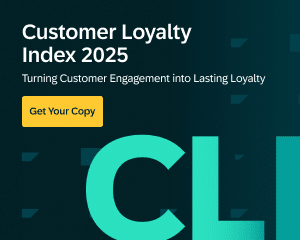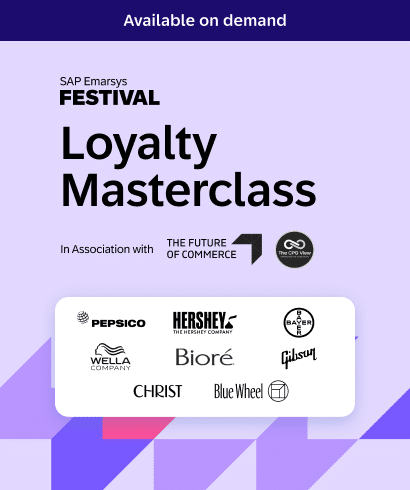Your marketing automation is running perfectly. Emails go out on schedule, campaigns trigger based on user actions, and your dashboard shows decent open rates. Yet something’s off: Conversion rates plateau, customers churn at the same predictable rate, and your campaigns feel increasingly ineffective.
However, the problem doesn’t lie with your automation. It’s that you’re treating all customers like they’re the same person.
Most brands stop at basic segmentation, like dividing customers into broad categories such as “new subscribers” or “frequent buyers.” But your customers aren’t categories. They’re individuals with specific preferences, behaviors, and purchase patterns that change over time.
As a result, smart brands have moved beyond basic automation to true personalization. They use customer data to predict what someone wants before they ask for it, adjust messaging based on browsing behavior, send product recommendations that actually match interest levels, and time communications when customers are most likely to engage.
In this article, we’ll take a look at 4 powerful ways you can create meaningful personalization and drive real value from your marketing automations. Let’s dive in.

1. Use Behavioral Triggers to Send Messages at the Right Moment
Forget scheduled sends and static drip campaigns. If you want to capture attention, and action, you need to respond to what customers are doing right now.
Behavioral triggers let you build flows around real-time actions, like when someone:
- browses a product but doesn’t add it to cart
- revisits a product category after a long break
- clicks a link in an email without converting
These signals tell you what a customer cares about, making them ideal moments to follow up with relevant messaging.
For example, instead of sending a generic “Come back soon” message, a customer who viewed three pairs of running shoes might receive a product recommendation email featuring the exact shoes they browsed, plus similar items in their size or price range.
Consider combining multiple triggers to sharpen your behavioral targeting even further. A user who clicks on a promo email and browses the clearance section within the same day? That’s a high-intent signal worth acting on fast.
Pro tip: Don’t just trigger based on one action. Build chains of behavior into your logic – sequences that reveal deeper intent. For instance, if someone views high-ticket items across multiple sessions and adds a lower-value product to their cart, you might trigger an automation that nudges them toward bundling or upgrading. These multi-step triggers outperform simple ones by surfacing hidden buying signals and delivering a more personalized experience.
Example in action: PatPat implemented 183 behavioral trigger automations including cart abandonment, browse abandonment, checkout abandonment, and price drop notifications. By responding to real-time customer actions rather than scheduled campaigns, they doubled revenue while improving email deliverability from 60% to over 99%. The key was layering multiple behavioral signals—customers who abandoned carts and had previously engaged with price drop emails received different messaging than one-time browsers.
2. Segment by Lifecycle Stage and Personalize Messaging Accordingly
While it’s tempting to view the purchase process as linear, every customer is at a different point in their journey, and each of those journeys is unique. Some just discovered your brand and are deciding if your products are for them, others are returning for their second purchase and are considering other options, and others haven’t purchased in months but could be tempted back with the right messaging.
Treating these segments the same runs the risk of alienating customers, not to mention wasting marketing spend. That’s where lifecycle-based segmentation comes in.
Lifecycle-based segmentation helps you tailor messaging to where someone is in the funnel. New subscribers need to build trust. First-time buyers often need guidance toward a second purchase. At-risk or lapsed customers need a reason to come back, not just another generic promotion.
The power comes from aligning your content, cadence, and tone to each stage. For instance:
- New subscribers might receive a welcome flow focused on brand values and bestsellers.
- First-time buyers could get product education, reviews, or cross-sell offers.
- Loyal customers can be targeted with early access, loyalty rewards, or exclusive content.
- Lapsed customers might benefit from a reactivation campaign paired with a one-click reorder feature.
SAP Emarsys takes this even further with automated lifecycle segmentation, allowing brands to build flows that dynamically shift users into new journeys the moment their behavior changes.
Pro tip: Don’t wait for a customer to churn, predict it. Platforms like SAP Emarsys use machine learning to detect early signs of disengagement, allowing you to trigger winback flows before a customer drops off completely. This kind of predictive automation protects revenue and keeps your retention engine running smoothly.
Example in action: John Frieda launched their ULTRAfiller+ thickening system with a 5-month lifecycle campaign that evolved messaging at each stage. Launch emails focused on education, comparison emails highlighted product differences, retail launch emails built urgency, and replenishment emails triggered after 30-45 days when products would expire. The replenishment campaign alone achieved a 9.84% conversion rate within 24 hours because it matched the customer's natural purchase cycle rather than arbitrary timing.
3. Leverage Product and Content Affinities for Better Recommendations
Good recommendations are based on what customers have bought. Great recommendations are based on what they almost bought, what they browsed, what they clicked, and what people like them tend to purchase next. This takes data, and you likely have lots of it, waiting to be put to work.
First- and zero-party data help you understand what your customers are drawn to, not just once, but over time. Someone might repeatedly browse outdoor gear without buying, click on skincare products in emails, or add shoes to their wishlist every time there’s a new drop. These patterns are more telling than a single purchase and give you a much clearer sense of their intent.
With SAP Emarsys, brands can track these behaviors across email, web, and mobile, then feed them into product recommendation engines that adapt in real time. A customer who’s interested in high-performance running gear today might be served marathon training content next week, or see matching accessories promoted in their next email.
Pro tip: Use affinity weighting to improve accuracy. Give more influence to recent or repeated behaviors, and less to one-off interactions. For example, a customer who viewed noise-cancelling headphones across three sessions should see those products prioritized over a single click on a speaker. This weighting helps recommendations feel sharper, more relevant, and more likely to convert.
Example in action: When launching new products, Wella Company uses data insights to identify salon owners and stylists with similar buying patterns to successful early adopters. Rather than broad demographic targeting, they analyze purchase behavior, product categories, and engagement patterns to find prospects most likely to be interested. This affinity-based approach helps them deploy personalized omnichannel campaigns that drive higher engagement because the recommendations feel relevant rather than random.
4. Align Channel and Timing to Individual Preferences
Even the perfect message will flop if it lands in the wrong place at the wrong time. Some customers check email religiously at 7am. Others ignore email entirely but respond instantly to SMS or push notifications. If your automation doesn’t account for those preferences, you’re missing easy wins.
Smart personalization means letting the customer lead, not just in what they hear from you, but how and when they hear it.
By using an omnichannel customer engagement platform, you can automatically identify a customer’s preferred channels and optimize timing based on past engagement patterns. That means no more guesswork around send times or generic multi-channel blasts. You reach people when they’re most likely to respond, on the channel they actually pay attention to.
This also opens the door to smart fallback logic. If your email doesn’t resonate with a customer segment, you can switch tack and automatically follow up with a push notification or SMS instead, keeping the conversation going without repeating yourself.
Pro tip: Map channel preferences to lifecycle stages. For example, you might find that first-time buyers respond well to SMS post-purchase, but long-term customers prefer email. Let behavior, not assumptions, dictate how your automation flows evolve.
Example in action: Feel Good Contacts built an omnichannel strategy across email, mobile app, web push, and social ads, driving 24% of customers to purchase through their mobile app. They used integrated data to understand which channels performed best for different customer segments and optimized timing through A/B testing. By connecting online and offline behavior data, they increased revenue 26% year-over-year and cart size by 40% through smarter channel allocation and personalized push notifications.







